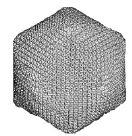Plant Pathology, Department of

James Van Etten Publications
Document Type
Article
Date of this Version
8-30-2017
Citation
Scientific REports 7: 10101
DOI:10.1038/s41598-017-10388-w
Abstract
Ancient endosymbiotic relationships have led to extreme genomic reduction in many bacterial and eukaryotic algal endosymbionts. Endosymbionts in more recent and/or facultative relationships can also experience genomic reduction to a lesser extent, but little is known about the effects of the endosymbiotic transition on the organellar genomes of eukaryotes. To understand how the endosymbiotic lifestyle has affected the organellar genomes of photosynthetic green algae, we generated the complete plastid genome (plastome) and mitochondrial genome (mitogenome) sequences from three green algal endosymbionts (Chlorella heliozoae, Chlorella variabilis and Micractinium conductrix). The mitogenomes and plastomes of the three newly sequenced endosymbionts have a standard set of genes compared with free-living trebouxiophytes, providing no evidence for functional genomic reduction. Instead, their organellar genomes are generally larger and more intron rich. Intron content is highly variable among the members of Chlorella, suggesting very high rates of gain and/or loss of introns during evolution. Phylogenetic analysis of plastid and mitochondrial genes demonstrated that the three endosymbionts do not form a monophyletic group, indicating that the endosymbiotic lifestyle has evolved multiple times in Chlorellaceae. In addition, M. conductrix is deeply nested within the Chlorella clade, suggesting that taxonomic revision is needed for one or both genera.


Comments
Open Access This article is licensed under a Creative Commons Attribution 4.0 International License